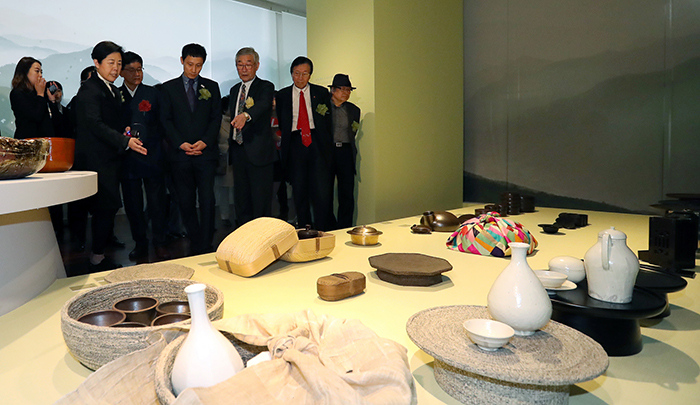
The special exhibition 'A Joy of Spring: Scenery, Blossoms and Delicacies,' holds an early launch ceremony at the National Folk Museum of Korea on April 12. The exhibition will officially open on April 15, exactly 300 days before the opening ceremony for the PyeongChang 2018 Olympic and Paralympic Winter Games.
By Kim Eun-young, Hur SomEe and Kim Young Shin
Photos = Jeon Han
April 12, 2017 | Seoul
April 15 is just 300 days from the opening ceremony for the PyeongChang 2018 Olympic and Paralympic Winter Games. A special exhibition called “A Joy of Spring: Scenery, Blossoms and Delicacies” will open that day, drawing attention to local food in Gangwon-do Province and to the area's history of cuisine. The exhibition will run at the National Folk Museum of Korea until June 20.
An early launch ceremony was held on April 12, three days prior to the official opening.
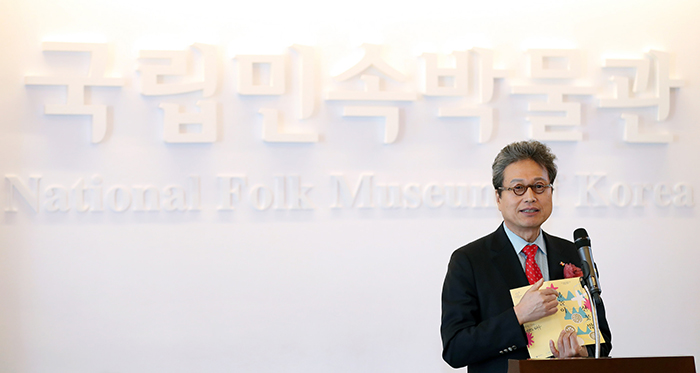
Director Cheon Jingi of the National Folk Museum of Korea explains the importance of the 'A Joy of Spring: Scenery, Blossoms and Delicacies' exhibition on April 12.
“We prepared this exhibition to promote the cuisine of Gangwon-do Province and of Korea, presenting it to the world from many different perspectives,” said Cheon Jingi, director of the National Folk Museum of Korea. “This will be an opportunity to develop our food culture and to create new food content.”
“The theme of the exhibition is mountains, flowers and rice, which all represent Gangwon-do Province and its unique cuisine,” he said. “The PyeongChang Winter Games will mix well with fresh green herbs (나물) like bibimbap mixed rice.”
“When it was announced in Durban, South Africa, in 2011 that Pyeongchang would be the official host for the 2018 Winter Games, all the Korean people cried for joy,” said Kim Young-san, deputy minister for culture and arts policy. “It feels just like yesterday, but the Winter Olympics are already just around the corner.”
“Gangwon-do Province, home to the three host cities, is famous for its gamjajeon potato savory pancakes (감자전), makguksu buckwheat noodles (막국수), gomchwinamul seasoned green herbs and other wild herbs collected in the mountains,” he said. “Please enjoy the natural ingredients that were grown in the pure nature of Gangwon-do Province!”
Gangwon-do Province’s official representative local delicacies are gajami sikhae fermented flatfish (가자미식해), baechujeon nappa cabbage savory pancakes, olchaengi muk corn starch jelly and memilchongtteok buckwheat wraps (메밀총떡). They will all be served at the exhibition. Also, ojingeo soondae (오징어순대), a squid stuffed with mixed noodles, hwangtae sikhae dried and fermented pollock (황태식해) and gamja songpyeon potato rice cakes (감자떡) will be served at a hands-on media table where visitors could learn how they're prepared.
The special exhibition also features spring paintings from Gangwon-do Province, hand-made handicrafts and works of art by artist Choi Jeong Hwa. Choi’s art works will be on display at Ochon House (오촌댁), an exhibit hall just outside the museum.
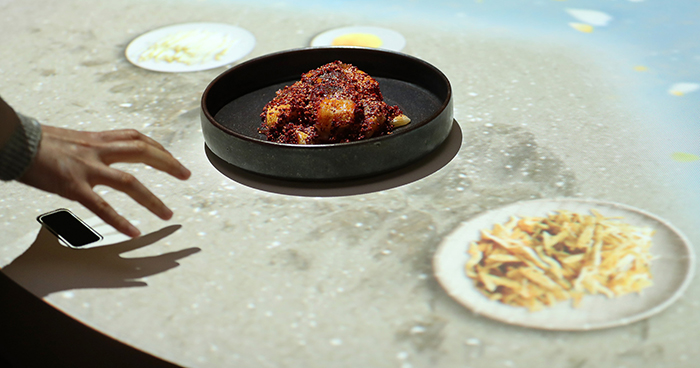
The recipe for hwangtae sikhae dried and fermented pollock (황태식해) is explained to a visitor at the media table.
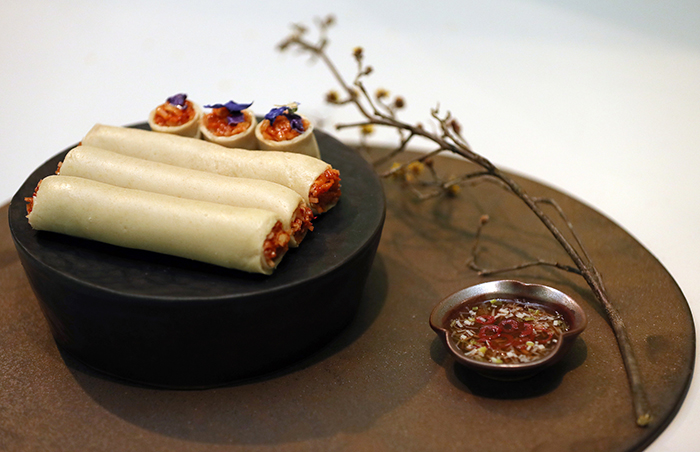
Memilchongtteok buckwheat wraps (메밀총떡), one of the most common dishes in Gangwon-do Province, are served on a manganese glazed plate (망간유 식판) crafted by artist Kim Jeong-ok.
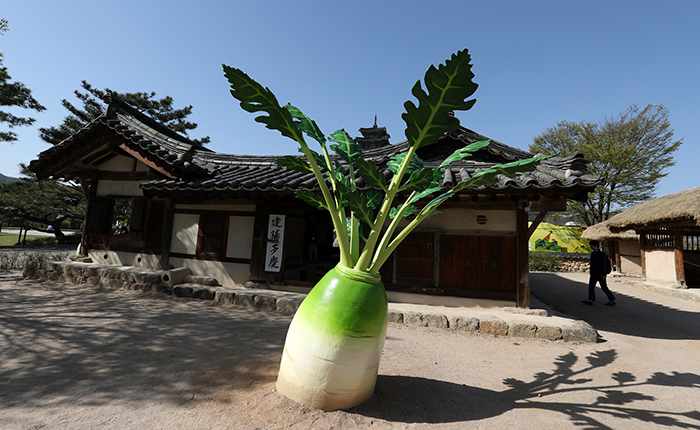
A giant work of art looks like a white radish. It's installed at Ochon House (오촌댁), an exhibit hall outside the National Folk Museum of Korea that is quite popular with non-Korean tourists. According to the museum, the work of art is a popular photo spot among non-Korean visitors.
eykim86@korea.kr